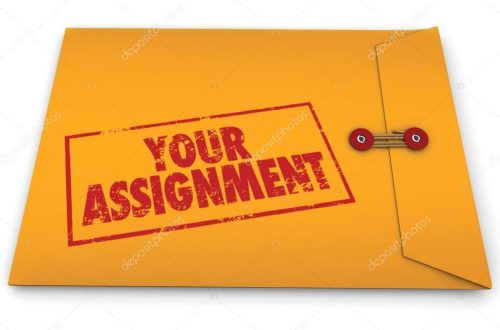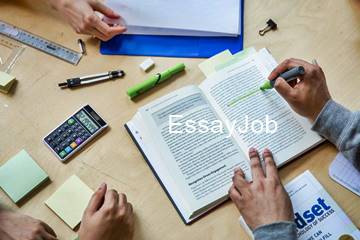
How To Write Assignment
To write an assignment, you first need to understand the assignment question. Once you understand the question, you can then start planning your answer by brainstorming ideas and organizing your thoughts. Next, you can start writing your answer by introducing your topic and providing some background information. After that, you can start discussing your ideas and providing evidence to support them. Finally, you can conclude your answer by summarizing your main points and restating the assignment question.
How do you start an assignment?
There is no one answer to this question as every assignment is different. However, there are some general tips that can help you get started.
The first step is to read and understand the assignment instructions. Make sure you understand what is required of you, and what the assignment is asking you to do.
Then, start brainstorming ideas. What topics can you write about based on the assignment instructions? What sources can you use to research your topic?
Once you have a general idea of what you want to write about, start drafting a outline. This will help you organize your thoughts and make sure you cover all of the key points.
Once you have a rough outline, start writing the body of your essay. Make sure to use clear and concise language, and to cite your sources correctly.
Finally, proofread and revise your essay. Make sure it is properly formatted and free of errors.
What makes a good assignment?
There is no definitive answer to this question as what makes a good assignment depends on the individual and the assignment itself. However, there are some general things to keep in mind when completing an assignment.
First, it is important to read the assignment instructions carefully. This will help you understand what is expected of you and will help you plan your time accordingly.
Next, be sure to take time to plan your work. This includes outlining what you plan to do and then drafting a rough version of your work. This will help you stay on track and ensure that your assignment is well-organized.
It is also important to be sure to proofread your work. This will help catch any errors and ensure that your work is of the highest quality.
Lastly, be sure to ask questions if you are unsure of anything. This will help you avoid any confusion and will help you complete your assignment successfully.
How should an assignment look like?
When it comes to academic assignments, there is no one-size-fits-all answer. However, there are some general tips that can help you create assignments that are effective and informative.
First, be clear about the purpose of the assignment. What are you hoping students will learn or accomplish as a result of completing the assignment? Once you know what you want, be sure to design the assignment in a way that will help students achieve those goals.
Second, make sure the assignment is well-structured. This means providing clear instructions and guidelines, as well as ample opportunity for students to ask questions and get help if needed. It’s also important to give students a sense of what the expectations are for the assignment. What is the format that you would like them to use? What kind of evidence should they include?
Finally, be sure to proofread and edit the assignment before handing it out to students. This will help ensure that there are no errors or unclear instructions, and that the assignment is easy to follow.
What is the format of writing an assignment?
When you are assigned a writing project, there is a specific format that you are expected to follow. This format may vary depending on the type of assignment, but there are some general guidelines that you can follow.
The first step is to read the assignment instructions carefully. This will give you an idea of what the professor is looking for. Be sure to understand all of the requirements, including the length, formatting, and citation style.
Next, you should brainstorm and come up with a topic. Make sure that the topic is relevant to the assignment and that you have enough information to write a full paper.
Once you have a topic, it’s time to start writing. The introduction is your chance to introduce the topic and capture the reader’s attention. The body of the paper should be organized and include evidence to support your argument. The conclusion should summarize your main points and leave the reader with something to think about.
Finally, be sure to proofread and revise your paper. This is an important step to ensure that your paper is polished and error-free.
How do you start a writing assignment?
It can be daunting to start a writing assignment, but there are a few simple steps you can take to make it a little easier.
1. Read the assignment carefully and make sure you understand what is expected of you.
2. Brainstorm some ideas.
3. Choose one of your ideas and start drafting your essay.
4. Revise and edit your essay as needed.
5. Proofread your essay and make any final corrections.
How do you arrange an assignment?
There are a few things to keep in mind when arranging an assignment. First, be sure to consider the audience for the assignment. Who will be reading it? What do they already know about the topic? What do you want them to know?
Next, be sure to choose a format that will best communicate your ideas. A research paper, for example, might be best for presenting complex information to a scholarly audience. An essay, on the other hand, might be better for communicating with a general audience.
Finally, be sure to plan your time wisely. Start by brainstorming what you want to say, then outlining your ideas. Once you have a rough draft, revise and edit it until it’s ready to be published.
How do you write an introduction for an assignment?
An introduction is the first paragraph of a written assignment, and it’s important to get it right. A good introduction will introduce the topic, capture the reader’s attention, and set the tone for the rest of the paper.
There are a few things to keep in mind when writing an introduction:
1. Introduce the topic.
In your introduction, you should introduce the topic of your paper. What are you writing about? What are the main points you want to make?
2. Capture the reader’s attention.
Your introduction should be interesting and engaging so that the reader will want to keep reading. You can do this by using a quote, anecdote, or statistic.
3. Set the tone for the paper.
The introduction should set the tone for the rest of the paper. Are you writing a formal paper or a more informal essay? What is the tone of your paper?
How do you start an assignment on the first sentence?
When starting an assignment, it can be important to begin with a strong, attention-grabbing sentence. This can help to set the tone for the rest of the paper and keep the reader interested. There are a few different techniques that can be used to start an assignment on the first sentence.
One technique is to use a strong quote. This can be a famous quote or a quote from the assignment’s topic. Another technique is to use a question. This can help to engage the reader and make them want to read on to find the answer. A third technique is to use a short anecdote or story. This can help to introduce the topic of the assignment and make the reader interested in learning more.
Whatever technique is used, it is important to make sure that the first sentence is strong and engaging. It should set the tone for the rest of the paper and help to keep the reader interested.
How do you start an assignment paper?
The first step in starting an assignment paper is to read the instructions given by the professor. This will give you an idea of what the professor is looking for in the assignment. After reading the instructions, you should develop a thesis statement. A thesis statement is a sentence or two that states the main point of your paper. Once you have developed your thesis statement, you should create an outline of your paper. The outline will help you to organize your thoughts and ensure that your paper is properly structured. After you have created your outline, you can begin writing your paper. Be sure to proofread your paper before submitting it to your professor.
What comes first in assignment?
When you are given an assignment, what comes first – the planning or the execution? This is a question that students and professionals often ask themselves, and the answer can vary depending on the situation. In general, it is advisable to plan out an assignment before starting to write it, but there are times when it is necessary to start writing right away.
One of the benefits of planning is that it can help you to organize your thoughts and ensure that your assignment is well structured. When you have a clear plan, you know what you need to include in your paper and you can better focus on writing. Additionally, planning can help you to avoid plagiarism by ensuring that you properly cite your sources.
However, there are times when it is not possible to plan an assignment in advance. For example, if you are given a short notice or if the topic is unfamiliar to you, it may be necessary to start writing right away in order to gather your thoughts. In these cases, it is still important to plan out your paper as best as you can and to make sure that your writing is clear and concise.
Ultimately, the best approach to take when completing an assignment depends on the situation. If you have the time, it is advisable to plan out your paper first; but if you don’t, don’t worry – just make sure that you are organized and that your writing is clear.
What are the characteristics of a good assignment?
When it comes to assignments, there are a few key characteristics that make them good. First, an effective assignment is well-organized. It lays out what is expected of the student in a clear and concise manner. Second, a good assignment is tailored to the student’s level of ability. It is neither too easy nor too difficult, but instead provides the right level of challenge. Third, an effective assignment is relevant to the student’s coursework. It helps the student learn and practice the skills they are studying. Finally, a good assignment is timely. It is due on or before the assigned date, and does not require last-minute scrambling.
What are the 4 components of an assignment?
An assignment is a task that is given to someone to complete. It usually consists of four components: a directive, a subject, a purpose, and a deadline.
The directive is a statement that tells the person what they are supposed to do. The subject is the topic of the assignment. The purpose is the reason why the subject is being studied. The deadline is the date by which the assignment must be completed.
What are the 3 parts of assignment?
The three parts of an assignment are the introduction, body, and conclusion. The introduction introduces the topic of the assignment and states the thesis or main idea. The body is where you develop your argument, using evidence to support your points. The conclusion wraps up the argument and restates the thesis.
How do you structure an assignment?
There is no one right way to structure an assignment, but there are some general principles that can help you create an effective assignment.
One important principle is to make sure your assignment is clear and concise. This means that your instructions should be easy to follow, and your students should be able to understand what you are asking them to do.
Another important principle is to ensure that your assignment is well-organized. This means that your instructions should be logically arranged, and your students should be able to easily find the information they need.
You may also want to consider including a grading rubric with your assignment. This can help your students understand how they will be graded, and it can also help you to assess their work more effectively.
What should a good assignment contain?
A good assignment should be well-thought out and organized. It should clearly state the objectives of the assignment and the steps that students are expected to take in order to complete it. The assignment should also be concise and easy to understand.
How do you make an assignment look good?
There is no one-size-fits-all answer to this question, as the best way to make an assignment look good will vary depending on the specific assignment and the instructor’s preferences. However, there are a few general tips that can help make any assignment look better.
One of the most important things to do is to make sure that the assignment is properly formatted. This means following the instructor’s specific formatting guidelines, as well as using the correct fonts, margins, and spacing. In addition, it is important to be neat and to proofread the assignment before submitting it.
Another key factor in making an assignment look good is to use strong, clear language. This means ensuring that the sentences are well-constructed and that there are no spelling or grammar errors. Additionally, it can be helpful to use active voice and strong verbs whenever possible.
Finally, it is often helpful to include visuals in an assignment. This could include tables, graphs, diagrams, or images. If possible, try to find images that are relevant to the topic of the assignment.




